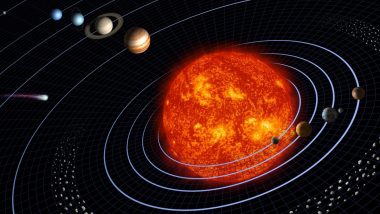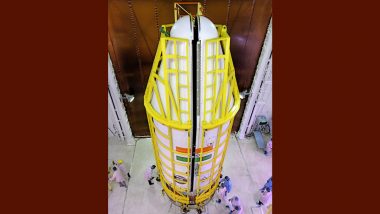Washington, June 1: A delightful view of all five naked-eye planets will line up in the dawn sky in June, according to a monthly American magazine, adding that all of them will also be in their proper order from the Sun. According to a release issued by the online publication Sky & Telescope which is part of AAS Sky Publishing, LLC, a wholly-owned subsidiary of the American Astronomical Society, June's lineup is such that the planets are arranged in their natural order from the Sun.
Throughout the month of June, shortly before the Sun rises, viewers could see Mercury, Venus, Mars, Jupiter, Saturn -- in that order -- stretching across the sky from low in the east to higher in the south. Mercury will be tougher to spot: Early in the month, viewers will need an unobstructed eastern horizon as well as binoculars to potentially see the little world. NASA’s James Webb Space Telescope Will Study Two Earth-Like Planets.
As the month wears on, Mercury climbs higher and brightens significantly, making it easier to see, and thus completing the planetary lineup, the statement read. The last time the five naked-eye planets were strung across the horizon in sequence was in December 2004. It is to be noted that this year, the gap between Mercury and Saturn is much shorter. NASA’s James Webb Space Telescope Will Study Two Earth-Like Planets.
There are several dates of note this month. From June 3-4: On these two mornings, the five planets span 91° when the separation between Mercury and Saturn will be at its smallest. According to Sky & Telescope magazine, the planetary lineup on June 24 morning is even more compelling. To begin with, Mercury will be much easier to snag, making the five-planet parade that much more accessible. The view will remain for about an hour, from when Mercury pops above the horizon to when the rising Sun washes it out of the sky.
Notably, the real bonus is the waning crescent Moon positioned between Venus and Mars, serving as a proxy Earth. By this time of the month, the planets are spread farther across the sky -- the distance between Mercury and Saturn will be 107°. If it's cloudy on the dates of note, you still have all the mornings in between to take in the view of the five naked-eye planets adorning the southeastern horizon.
(This is an unedited and auto-generated story from Syndicated News feed, LatestLY Staff may not have modified or edited the content body)













 Quickly
Quickly




















